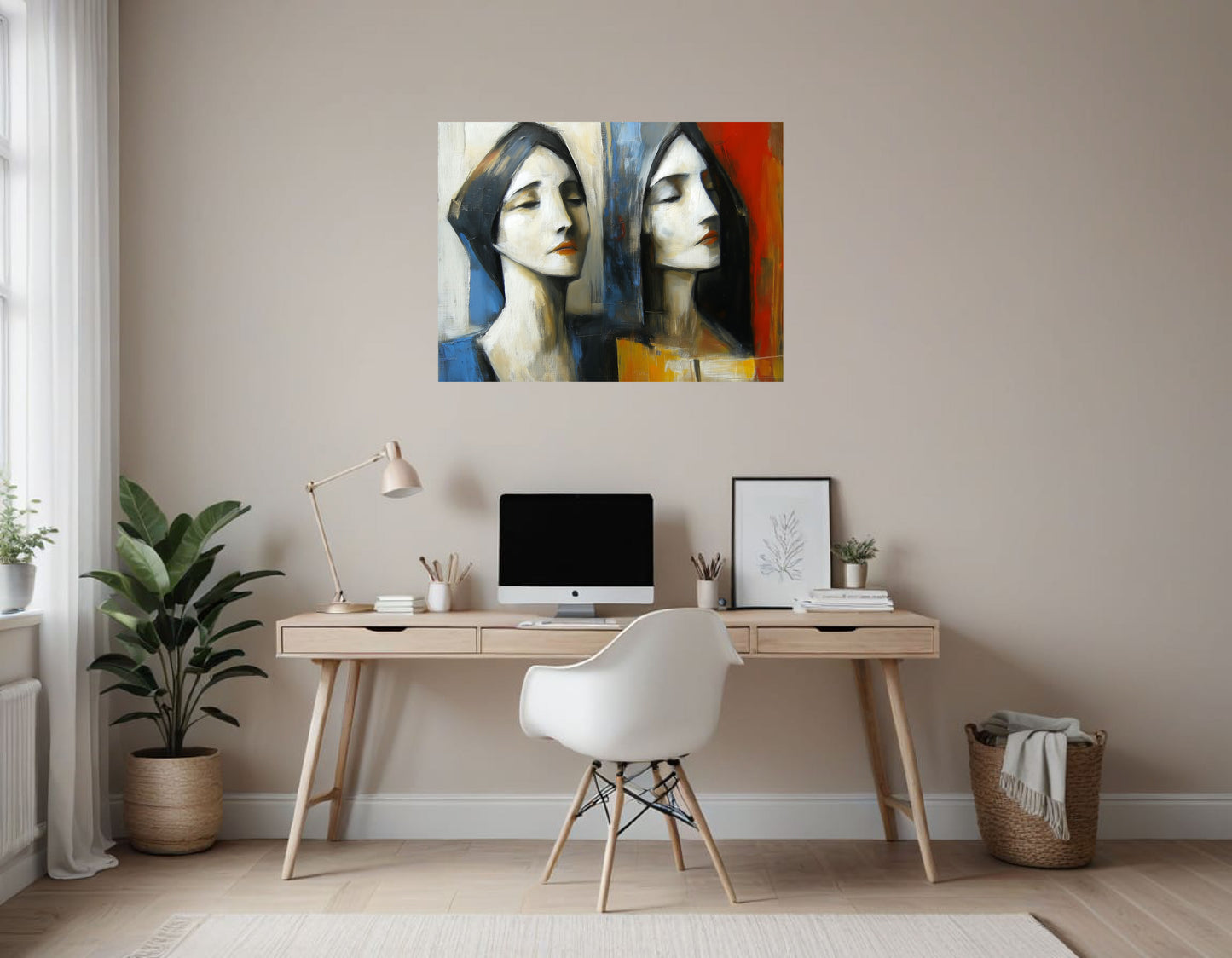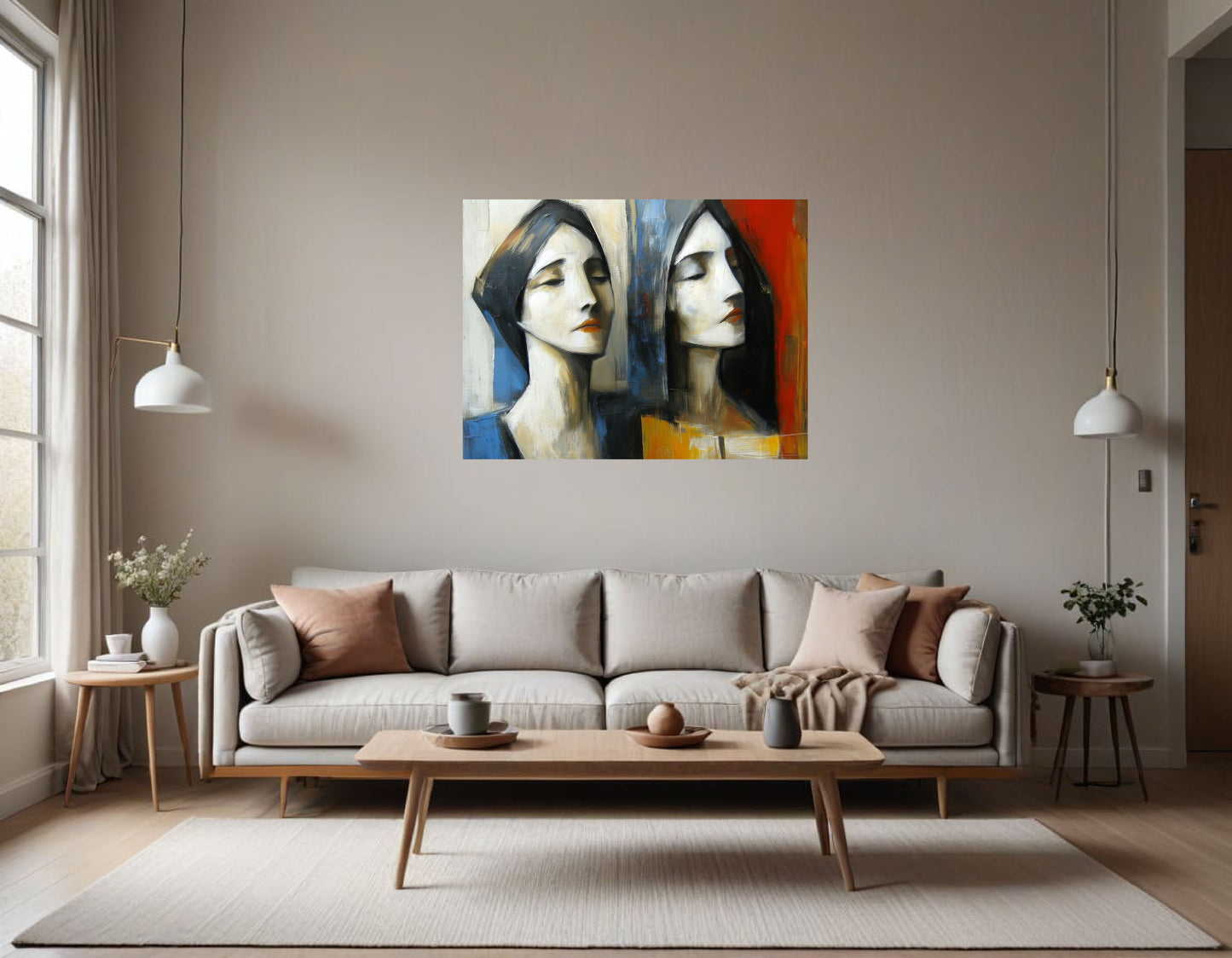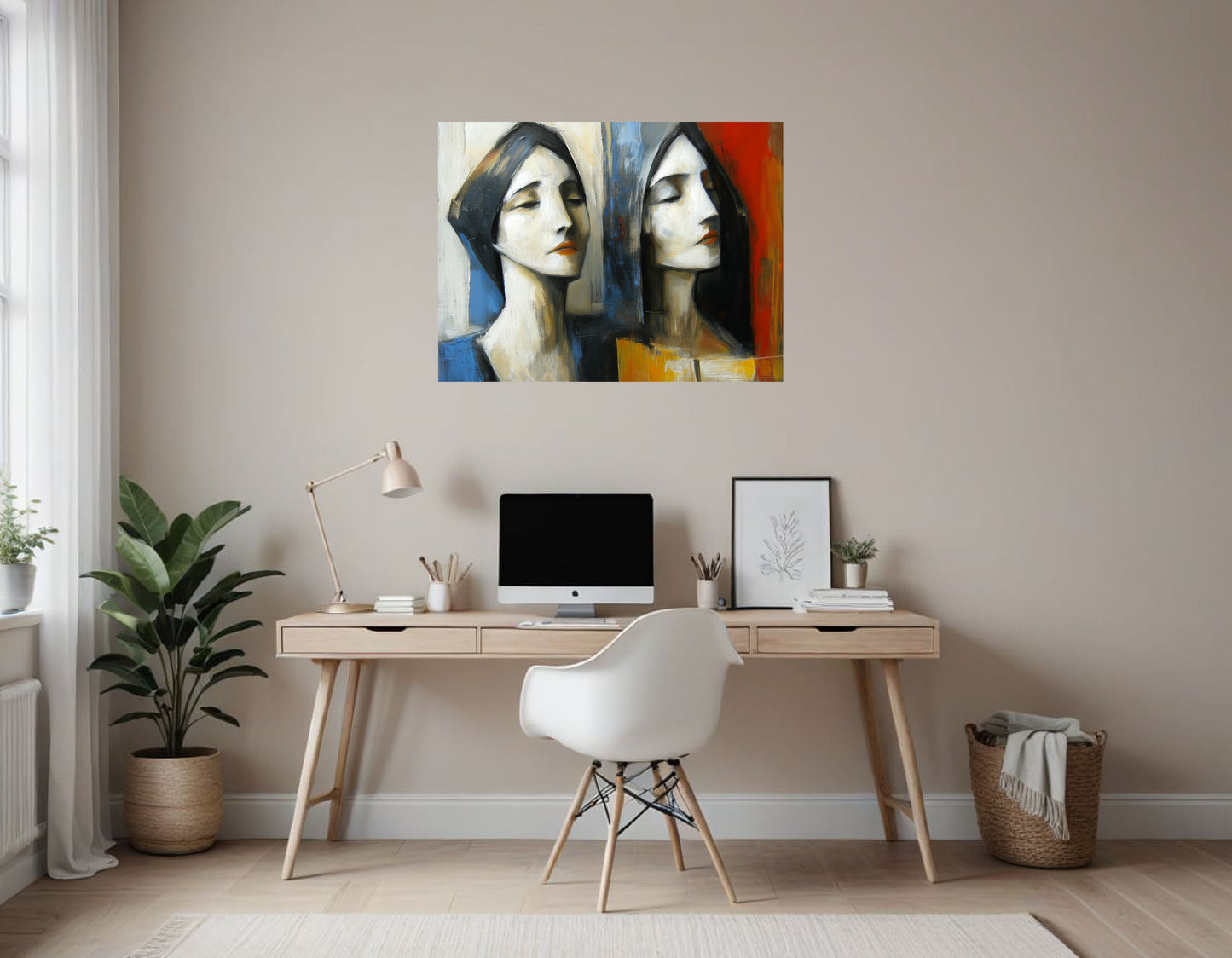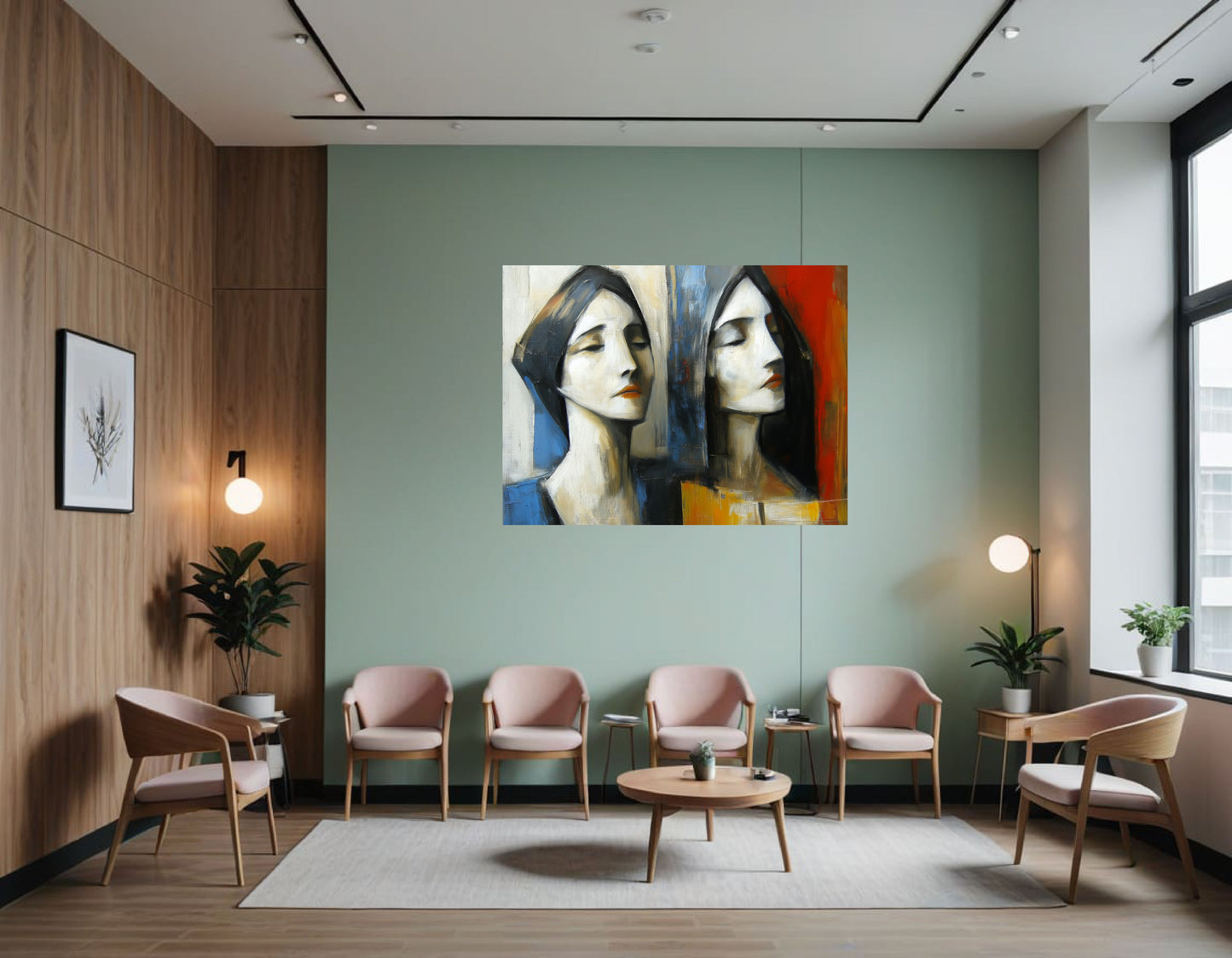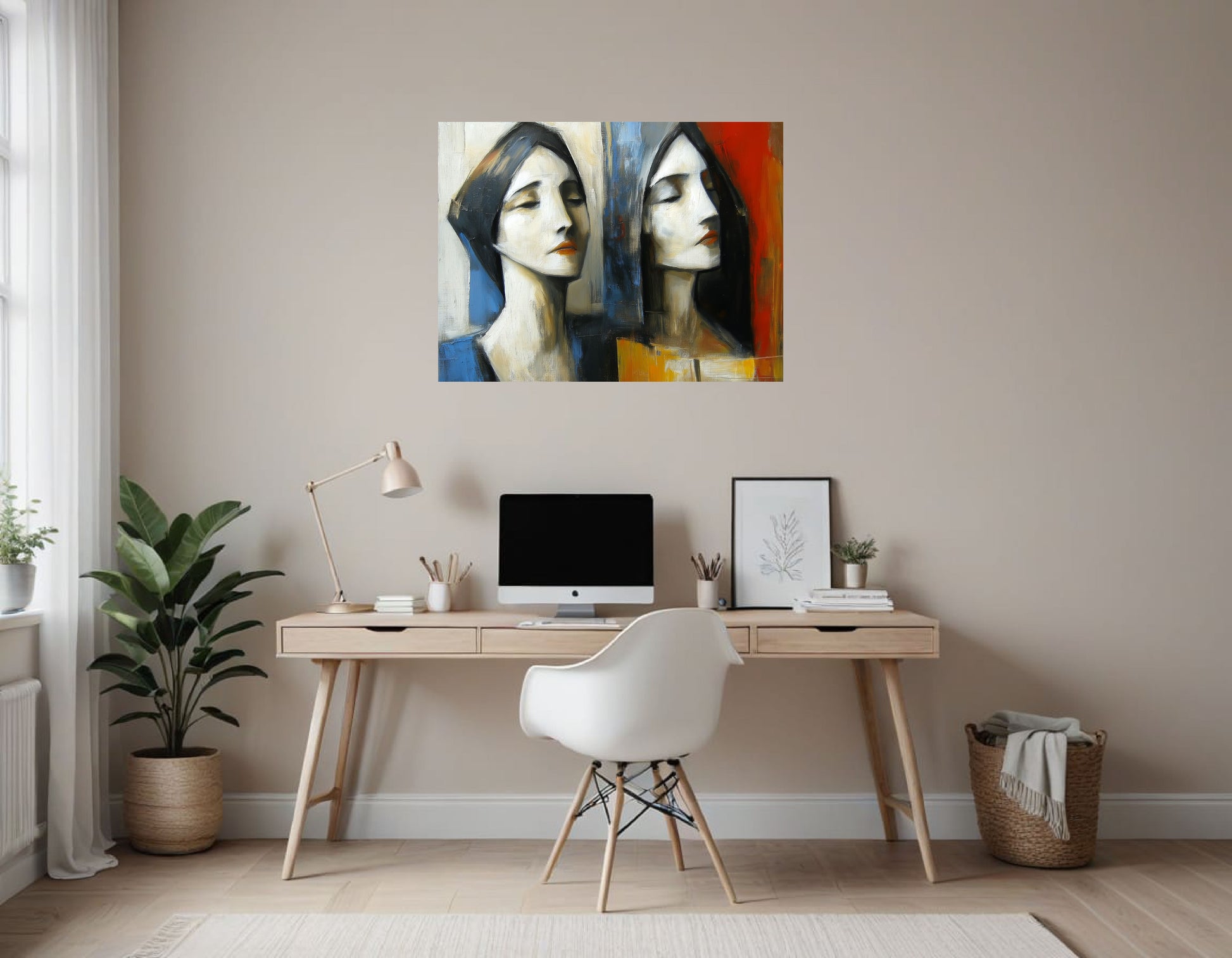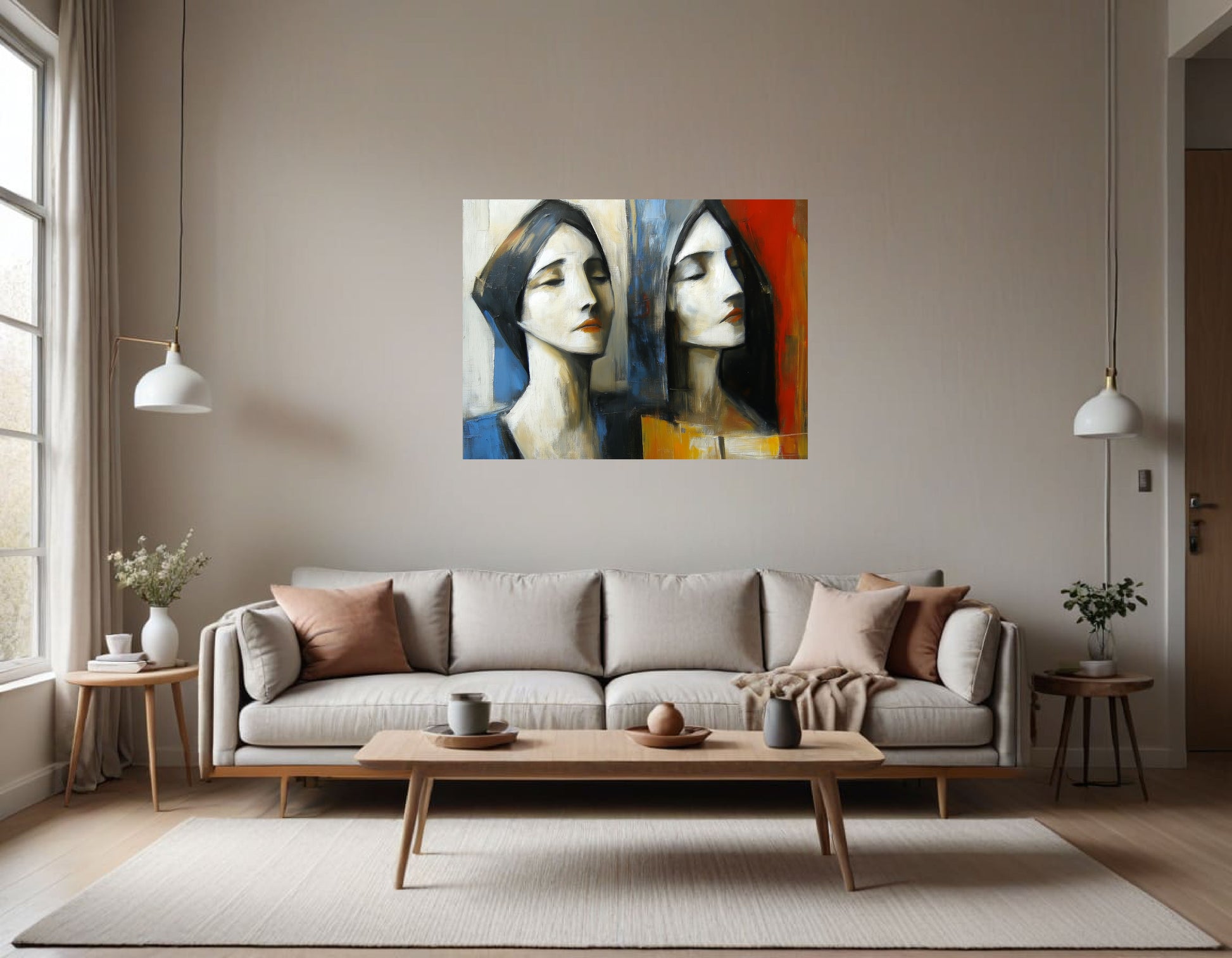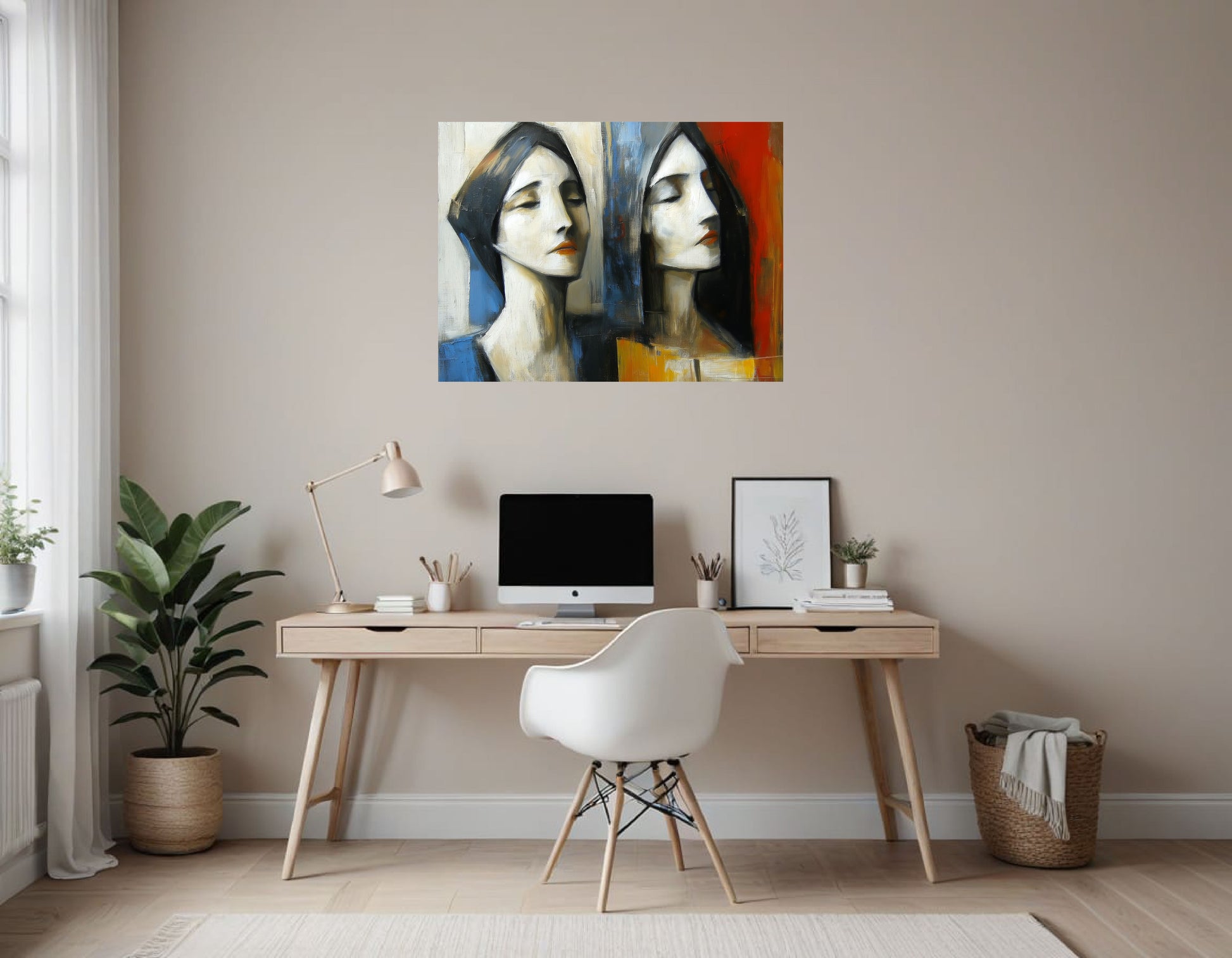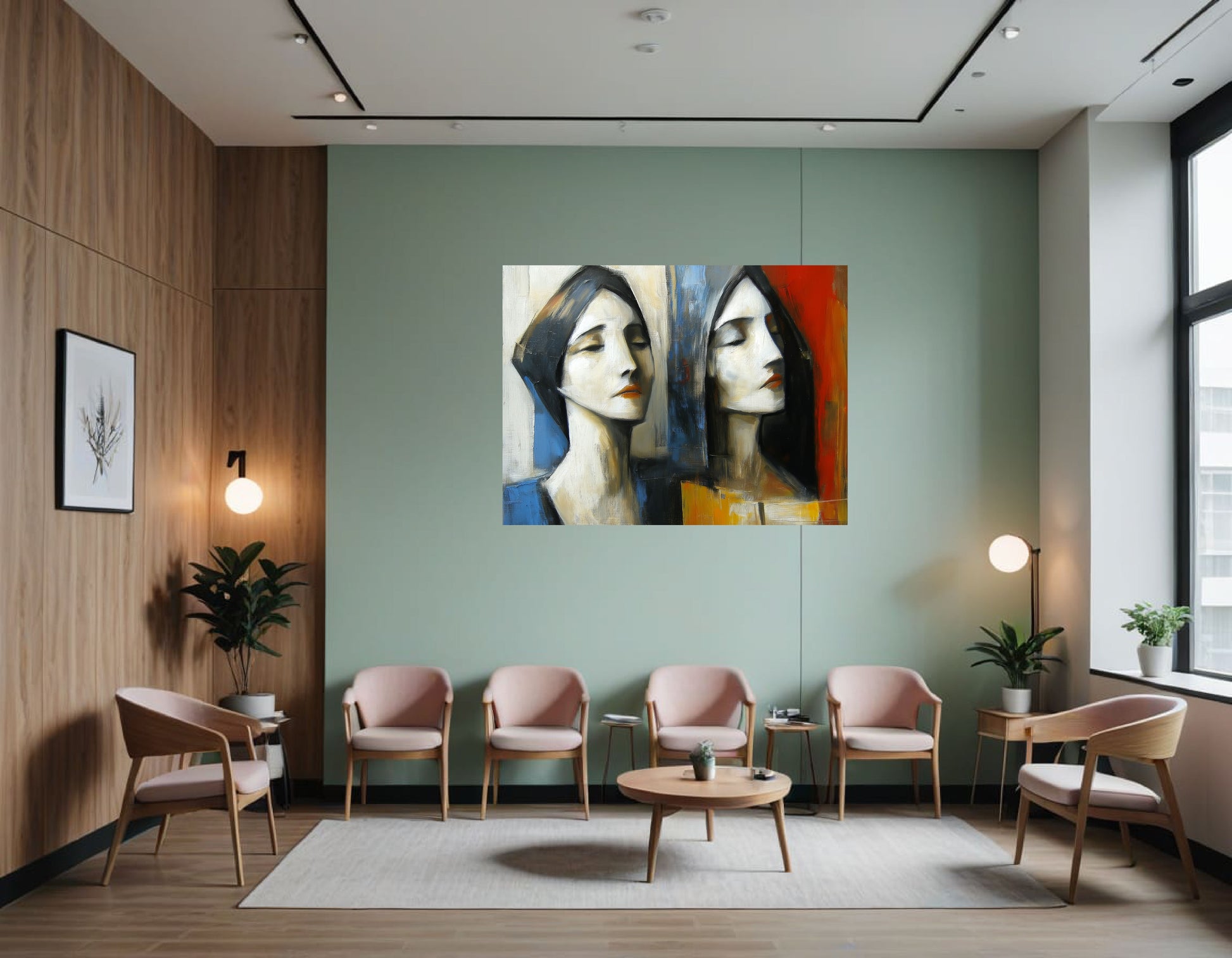Gerhardt Xzech Art OnLine
Two Women
Two Women
Couldn't load pickup availability
portraiture with a modern, almost expressionistic approach.
Here's a breakdown of the key features:
Figures: The women are rendered with simplified features, emphasizing form and emotion over precise detail. Their eyes are closed, suggesting a state of contemplation or introspection. Their faces are pale, almost white, providing a strong contrast against the darker background. The painting captures a sense of serenity and perhaps melancholy.
Color Palette: The color palette is relatively muted, yet rich and varied. The women's skin tones are predominantly pale whites and creams, juxtaposed against a dark blue on the left and a darker, almost black area behind the figure on the right. Warm oranges and yellows appear subtly in the background on the right, creating a sense of depth and warmth. The use of color helps define the shapes and forms.
Brushwork and Texture: The brushstrokes are visible and expressive, contributing significantly to the overall texture of the piece. The application of paint appears loose, rather than meticulously blended, reinforcing the painting's semi-abstract nature. The texture gives the piece a tactile quality.
Composition: The figures are positioned closely together, creating a sense of unity or perhaps a visual reflection. The stark division of the background colors (blue on one side, red-orange on the other) enhances the central focus on the women and adds a symbolic element to the artwork. The strong vertical lines created by the figures and the background are countered by the soft curves of the women's necks and shoulders.
Overall Impression: The painting conveys a sense of introspection and quiet contemplation. The style is reminiscent of modern figurative art, possibly with influences from Expressionism or even some aspects of Cubism in its simplification of forms. The image is thought-provoking and open to multiple interpretations. The artist uses color and composition to create a visual narrative, leaving the meaning up to the observer.
